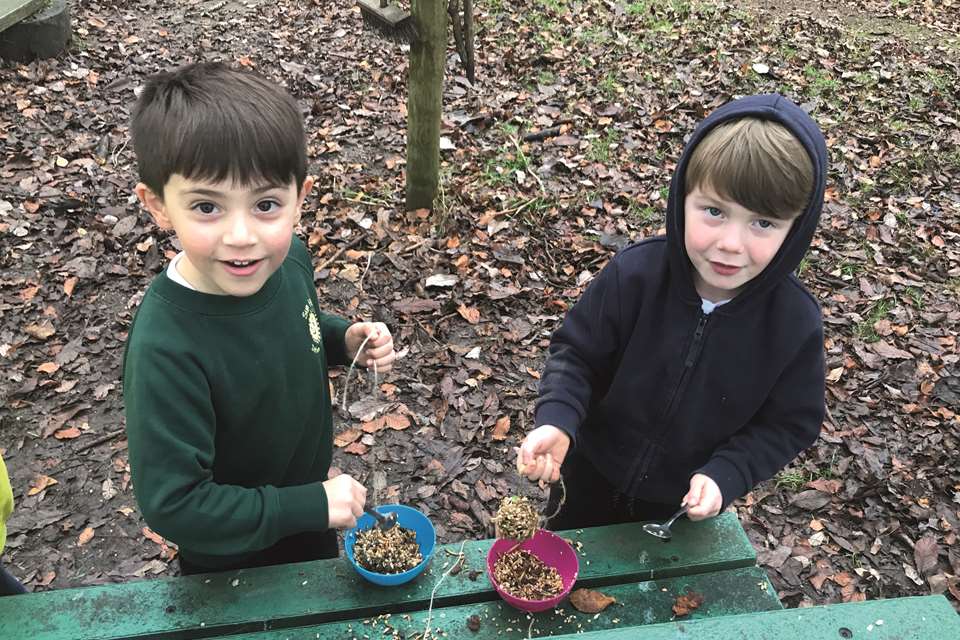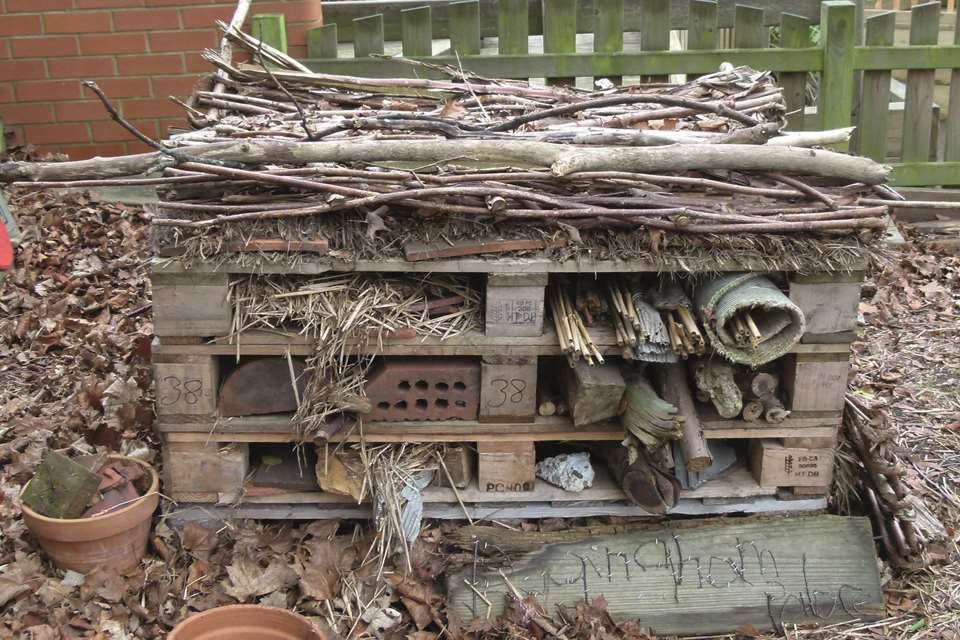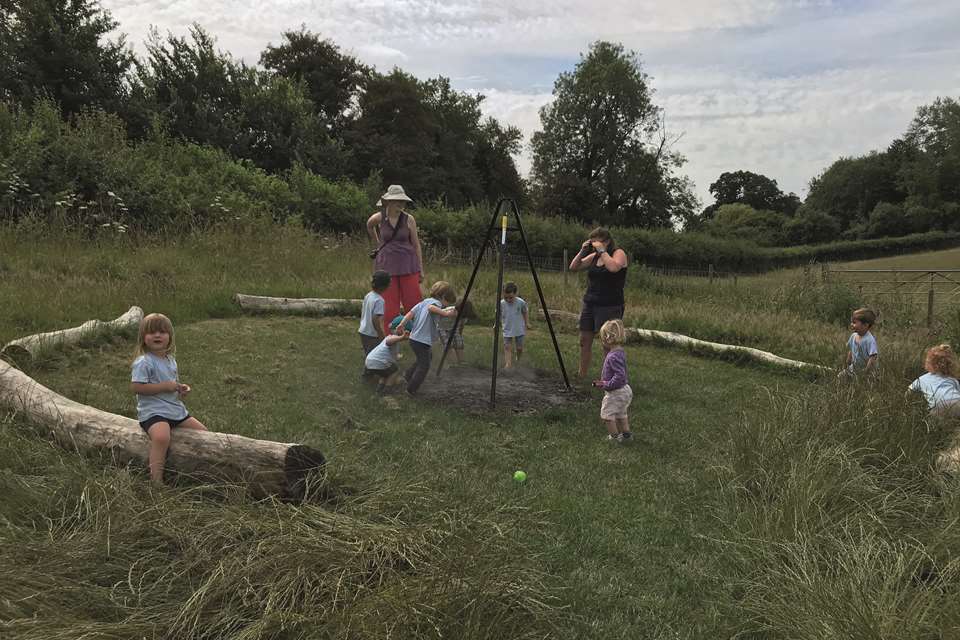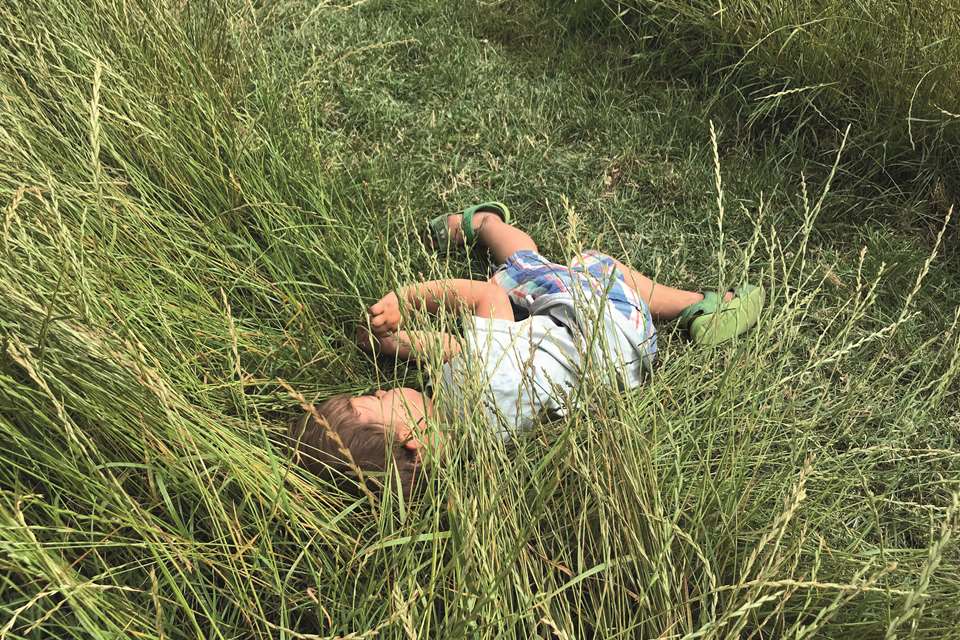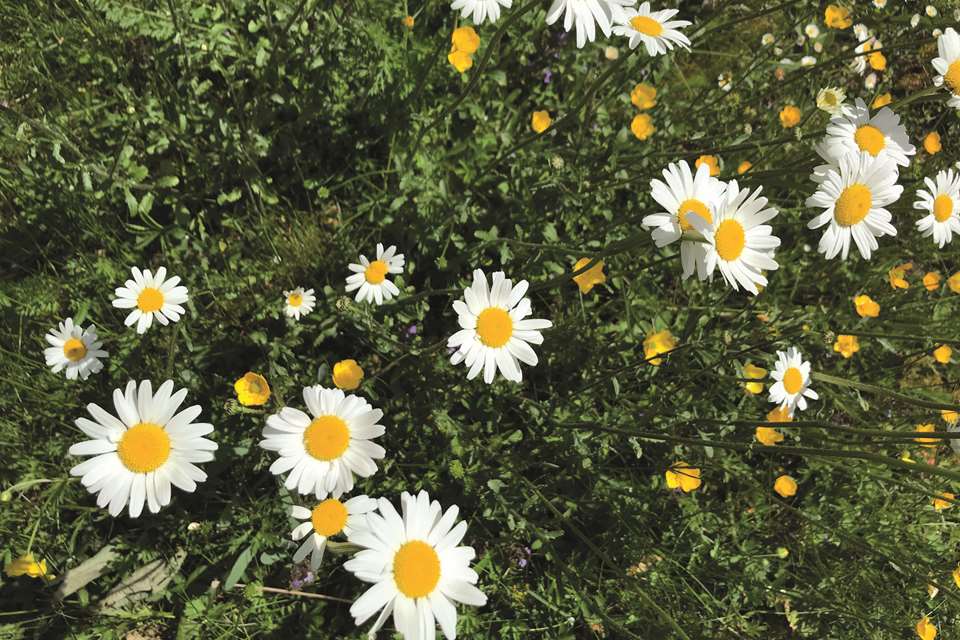Your outdoor calendar: November
Julie Mountain
Tuesday, October 26, 2021
This month, Julie Mountain is focusing on STEM because quick science, technology, engineering and maths projects are great when the weather is so unpredictable

Activity
SPOTTING A SPACESHIP

Did you know you can spot a spaceship with your own eyes? In fact, there are now thousands of identifiable flying objects in ‘near space’ and many of them can be spotted without binoculars or a telescope. If you are a wraparound setting, satellite spotting is just a matter of timing. But if your children are usually home before dusk, it would be worth planning a special Space Evening and inviting parents and children to meet you at the setting (or in a local park) after dark.
The International Space Station (ISS) is the second-brightest object in the night sky after the Moon. It takes around 90 minutes to orbit the earth and is about 420km above us.
It is easy to distinguish between a satellite and other bright objects: the light is steady (aircraft lights flash) and doesn’t twinkle (like stars and planets). They also move much more quickly across the sky than planes do.
Use a satellite-spotter app to work out exactly when the ISS will go overhead in your location. The trick is to acclimatise your eyes to the darkness so that when it goes over it is really obvious. Even if you are in the city, the ISS is so bright you should still spot it on a direct overhead pass.
Space X, a private rocket company, launches up to 40 satellites at a time. They can be seen racing after one another like a ‘chain’ of lights across the sky. Find out when the next launch is due at www.spacex.com, or search for ‘Starlink’.
Explore the science of space as part of satellite spotting: make models of satellites and hang them from the ceiling; read space stories; turn the home corner into a spaceship cabin; use loose-parts resources outdoors to create the surface and features of an alien planet.
If you have a bit of cash to spend on a resource, buy a Stomp Rocket to practise your own rocket launches – talk about the difference the angle of the launcher makes to how far and how high the rocket flies, as well as the amount of power children put into stomping. I have recently taken to making my own replacement rockets using thin plastic A4 sheets and duct tape.
Story to share
 The Darkest Dark by Chris Hadfield, illustrated by the Fan Brothers
The Darkest Dark by Chris Hadfield, illustrated by the Fan Brothers
I was lucky enough to hear charismatic Canadian astronaut Chris Hadfield talk about his experiences on the International Space Station.
I couldn’t resist buying myself a signed copy of this book, which has proved to be the perfect accompaniment for special stargazing evenings, as well as for launching imaginative ‘alien planets’ outdoor play.
Sharing the semi-autobiographical tale of how Hadfield’s imagination took him to the Moon long before he ever set foot in a real space suit, the illustrations will also offer talking points for children who are afraid of the dark.
Maintenance
IT’S TIME TO…

Clear out the pond if you have one. By November, most creatures are dormant and it is safe-ish to clear overgrown pond plants. It’s really important to do this every year if you can, even if it is a small pond, as pond planting is notoriously invasive. Last year, lockdown meant I wasn’t able to clear the school pond during autumn and I’m dreading how much harder it will be this year. Leave cuttings at the edge of the pond for a few days so that any creatures caught up in them can retreat back into the water.
Nature watch
LOOK OUT FOR…


Disappearing leaves: Take a trip around the garden and choose a deciduous tree – it doesn’t have to be one in your garden, but you do need to be able to see most of it from the garden. Decide on a time of day, and take a photograph of the tree from the same place every day. Print out the photos and ask children to point out the changes they see, day to day. It is likely they won’t notice much difference to start with, but try showing the Monday or Friday photos only, or images from the first and last days of the month.
STEM spots: colour changes, leaf texture changes, the pace at which leaves are dropped, maths opportunities (e.g. half of the leaves are gone, most of them are gone, why aren’t all the leaves now on the ground below the tree?), compare leaf loss to other nearby trees, compare with evergreen trees – particularly, collect evergreen leaves and deciduous tree leaves and spot the differences.
Hedgehogs will be starting to hibernate; check bonfires before lighting them, and check the middle of leaf piles before inviting children to enjoy jumping in them! If you can, collect leaves and pile them up somewhere out of the way to encourage hedgehogs to hibernate in your neighbourhood.
A new project
TREE PLANTING

Hopefully, after my August calendar, you ordered a pack of trees from the Woodland Trust and are now ready to plant them. The trees you will have received are known as ‘whips’ and you’ll see why – they look like whips, being just a thin stem, with bare roots on the end and perhaps only one or two very slender side branches.
- Decide where to plant the whips. If you haven’t already, take a tour of the garden and agree on quiet, safe places for new trees to be planted. Trees need light, water and a growing medium – usually soil. Whips could be planted in large pots or raised beds, or tucked away from the main play space.
- Show children the whips, pointing out the features: stem, side branches, roots, tip. Some species will have one or two leaves on; others will be completely bare at this time of year. Do children know which end is going to be planted into the holes they dig? How can they tell?
- Whips will appreciate being planted in clusters – they support and shelter one another as they grow, and in a few years’ time you can ‘thin’ them, removing the weakest specimens and leaving the strongest to thrive on their own.
Resources
BEG, BUY OR BORROW…
 Mystical STEM fire: for many reasons, settings don’t always want to celebrate Bonfire Night with fireworks. Explore and talk about the properties of fire in a less explosive way, with a couple of packets of Mystical Fire powder on a campfire – they cost about £1 each. When sprinkled on a small fire, the mixture of powdered chemicals creates coloured flames – blues, greens, pinks – that bounce around for up to 15 minutes. It is a quieter, more contemplative way to mark the Gunpowder Plot and to explore the science of fire: test different materials to see what ‘fuel’ will burn and blow gently to show that extra oxygen helps the fire burn more strongly.
Mystical STEM fire: for many reasons, settings don’t always want to celebrate Bonfire Night with fireworks. Explore and talk about the properties of fire in a less explosive way, with a couple of packets of Mystical Fire powder on a campfire – they cost about £1 each. When sprinkled on a small fire, the mixture of powdered chemicals creates coloured flames – blues, greens, pinks – that bounce around for up to 15 minutes. It is a quieter, more contemplative way to mark the Gunpowder Plot and to explore the science of fire: test different materials to see what ‘fuel’ will burn and blow gently to show that extra oxygen helps the fire burn more strongly.
Looking ahead
MAKE PLANS FOR…
Start collecting natural goodies (and a few sparkly items, if you like) to decorate your trees on Tree Dressing Day, which this year is 4 and 5 December. Tree dressing is an ancient celebration of the spirituality and importance of trees and takes many forms – these days including yarn bombing, attaching personal poetry and coloured ribbons.
Find out more at www.commonground.org.uk/tree-dressing-day.
Risk assessment
WATCH OUT FOR…
 Older children are ready to think about what is meant by ‘risk’ and you can begin to teach them the essence of consciously risk-assessing their own actions. Tour the outdoor space, asking children to show you their favourite spaces, places and features. What do they love about them (the benefits)? Now, looking for hazards, discuss what the consequences might be of the hazards. It is crucial to think about the likelihood of the hazard occurring to accurately assess the risk. What do children consider to be acceptable risk? Bumps and bruises? Record children’s thoughts in your floorbook, and there is a risk-benefit download on the Nursery World website to help direct the process.
Older children are ready to think about what is meant by ‘risk’ and you can begin to teach them the essence of consciously risk-assessing their own actions. Tour the outdoor space, asking children to show you their favourite spaces, places and features. What do they love about them (the benefits)? Now, looking for hazards, discuss what the consequences might be of the hazards. It is crucial to think about the likelihood of the hazard occurring to accurately assess the risk. What do children consider to be acceptable risk? Bumps and bruises? Record children’s thoughts in your floorbook, and there is a risk-benefit download on the Nursery World website to help direct the process.
‘Our Garden in 2021’
FOR THE RECORD…
Make a November weather page for the floorbook.
- In circle time, note down every kind of weather you can think of and encourage children to think of other words they know for common weather events – for example, rain could also be ‘drizzle’, or ‘raining cats and dogs’.
- Make a bar chart for every day of the month and divide each bar into two – for morning and afternoon. At the end of each day, discuss what the weather was and colour in the bar – filling the whole bar if it was the same weather, all day, or separating them into morning and afternoon.


